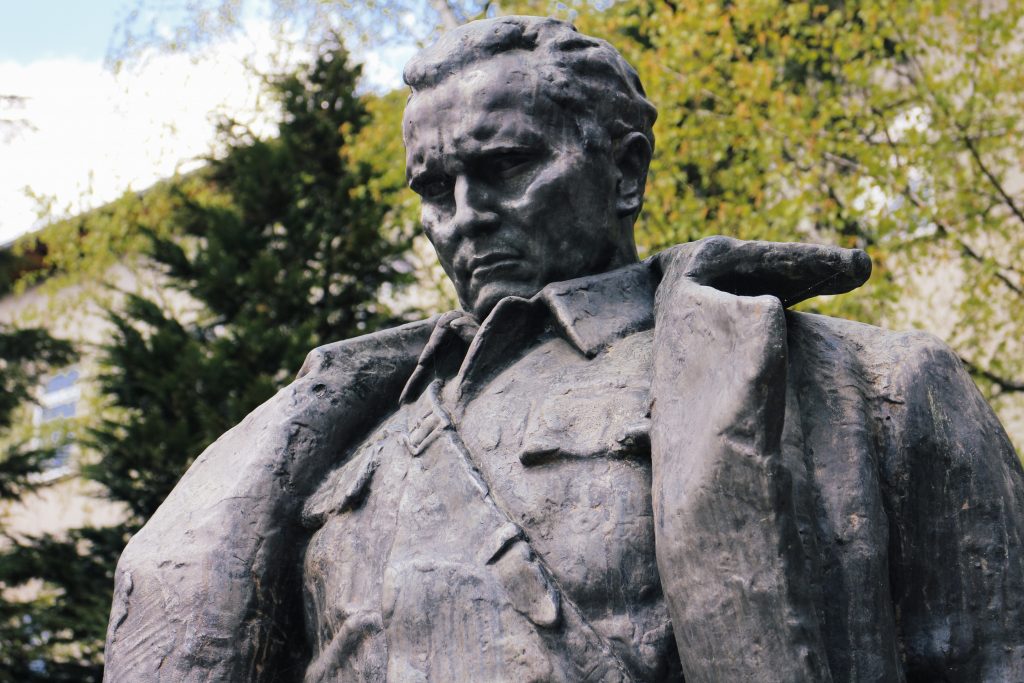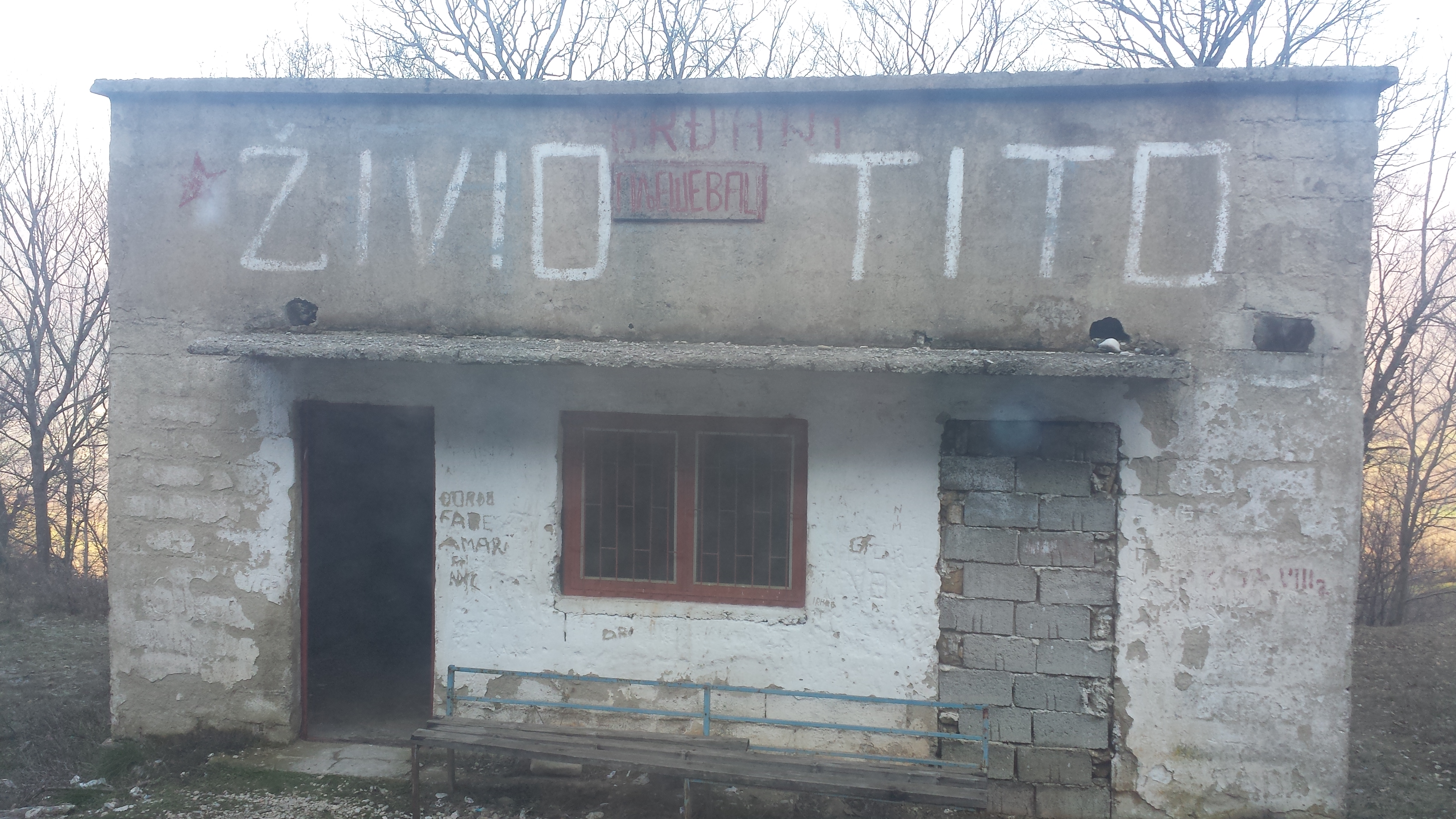
Marion Pineau explores a key connection between the past and present in the Western Balkans : Yugo-nostalgia.
The first time I heard about Tito was during my history class when I was 13 or 14 years old. We were studying the Cold War and the opposition between the two superpowers: the Western bloc (i.e. the “good-democratic-liberal-capitalist United-States”) versus the Eastern bloc (i.e. the “bad-dictatorial-communist-socialist Soviet Union”). Even if Tito actually belonged to neither of them, he was still “labeled” in our westerners’ minds as a “communist dictator of the East.”
The collapse of Yugoslavia in the 90s, the bloody wars that followed and the 140,000 dead was, to my teachers, obvious proof that the system Tito built was not efficient. That is why I was so surprised, when I traveled in Slovenia and then moved to Sarajevo, the capital of Bosnia and Herzegovina, to discover the portrait of Tito in almost every coffee house, restaurant, hostel, cevabdzinica and buregdzinica. I then realized that I actually did not understand anything about the region, about Yugoslavia and its people.
The Socialist Federal Republic of Yugoslavia (SFRY) was established in 1946 after the Partisans, led by Marshal Josip Broz Tito, freed the region from Nazi and fascist occupation. Initially one of Stalin’s favorite republics, the relations between the two became gradually less cordial as Tito had no intention of handing over the power he had gained, or accepting any foreign intervention or influence in his country. Consequently, the Yugoslav communist party was expelled from the Cominform in 1948 and Yugoslavia was the only Eastern European country to resist Soviet Union pressure. In the 1960s, Tito cooperated with leaders of African and Asian countries, including Egypt, India and Indonesia, to promote the concept of non-alignment and to stay independent of the United States and the USSR.
Tito, who led Yugoslavia for 35 years, was a skillful politician and probably one of the most influential manipulators of postwar politics. His strategy during the Cold War brought some concrete benefits to Yugoslav citizens. Even if he maintained the Communist Party’s monopoly on power, its leadership was softer than the other communist regimes in the rest of Eastern Europe. Tito wanted to form a communist community of “new people” in socialist Yugoslavia that was based on the concept of Brotherhood and Unity. For these reasons, the fall of the Berlin wall, which marked the collapse of the Eastern bloc, was not experienced the same way in Yugoslavia as in other socialist states.
“For East Germans, Hungarians, Czechs, etc. many things were worse before 1989 – they lived poorly, had no freedoms and could not leave their country without special permission,” says Teofil Pančič, a political commentator. “We, on the other hand, traveled wherever we wanted […]. Concerning living standards, we used to say that we had everything, whereas they basically had nothing. Then we had this war, whereas they experienced a kind of normalization of their lives. [For them], every year since 1989 has been better than the previous, while every year for people in the former Yugoslavia, apart perhaps from the Slovenes, has been worse.” (Excerpt from Yugonostalgia: Restorative and Reflective Nostalgia in former Yugoslavia by Nicole Lindstrom.)
Indeed, perhaps the most common form of Yugo-nostalgia is the most ordinary: nostalgia for a past that appears better than the present. The Yugo-nostalgia refers to the nostalgic, emotional attachment to both subjectively and objectively desirable aspects associated with the Socialist Federal Republic of Yugoslavia and Tito, the charismatic leader who personified it. These aspects are the economic security, a sense of solidarity, a socialist ideology, multiculturalism, non-alignment, customs and traditions, and a more rewarding way of life.

According to Ivica Buljan, a Croatian theatre director, “Yugoslavia represents a fictive country, like some kind of Atlántida [Atlantis], when we were gathering in our neighborhood to help our neighbor or lone mother; when it was all the same if a classmate’s name in elementary school was Refik [Bosnian name] or Janez [Slovenian name]; when it made no difference if we lived with family in one room, and with a bathroom, which we shared with other families …; when solidarity ruled among ordinary people.”
Even if Tito kept a tight control, Yugoslavs enjoyed free education and health care, open borders (the Yugoslav passport allowed citizens to travel almost everywhere in the world without a visa), a job for life, and above all, safety and peace. “People forgot that Tito was a dictator because they remember there was peace and stability,” says Slobodan Markovic, a political scientist from Serbia.
Yugo-nostalgia is critical of the perceived faults of the successor countries, many of which are still burdened by the consequences of the wars and are in various stages of economic and political transition. These faults are variously identified as individualism, corruption, economic difficulties and higher crime rates, as well as a general chaos in administrative and other state institutions. However, this nostalgia does not only find its origin in war.
Slovenia, a prosperous country of 2 million and well integrated in the European Union since 2004, was the first republic to secede from Yugoslavia almost 24 years ago, without suffering the consequences of the brutal wars of its neighbors. Nevertheless, many Slovenes miss belonging to Yugoslavia, a large multicultural country of 25 million people. Vanja Alič, singer in the Slovenian Yugo-nostalgic rock band Zaklonišče Prepeva remarks, “We all had a certain pride. We were raised to believe that Yugoslavia was a powerful country, a big country, and a beautiful country. That was a great feeling… Now there is none of that. Slovenia is now an unimportant, peripheral and parochial country, often confused with Slovakia.”
Yugo-nostalgia exists in almost every country of former Yugoslavia and in multiple forms. It can be nostalgia for cheesy folk music and the days when the family summer holiday in Croatia did not mean border checkpoints and security. Or it can be more…






